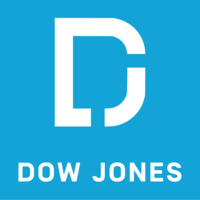Shell Beats Forecasts on Gas-Trading Resilience; Launches $3.5 Billion Buyback — 3rd Update
By Christian Moess Laursen
Shell's first-quarter adjusted earnings fell by less than expected, buoyed by a strong performance by its integrated gas division and kicked off a $3.5 billion share buyback program to close the valuation gap between it and its U.S. rivals.
The British energy major on Thursday reported adjusted earnings of $7.73 billion for the quarter, down from $9.65 billion in the same quarter a year ago, but ahead of market expectations provided by Vara Research of $6.46 billion.
Despite falling European natural-gas prices--which analysts expected to hamper earnings--Shell achieved most of its gains from the integrated gas segment. The division performed better than market viewers had anticipated thanks to a 10% increase in total oil and gas production, mainly due to the Prelude platform offshore Australia resuming operations.
In addition, its chemicals and products segment significantly beat forecasts, with $1.615 billion in adjusted earnings versus $1.05 billion according to Vara Research, thanks to higher refining margins and utilization, as well as global supply disruptions.
"Shell delivered another quarter of strong operational and financial performance, demonstrating our continued focus on delivering more value with less emissions," Chief Executive Wael Sawan said in a statement.
The London-based company continues to reward shareholders, with a $3.5-billion share buyback program set to complete by the release of its second-quarter results, having completed a similar buyback program following its fourth-quarter results. Meanwhile, the company also raised its dividend payout to 34.40 cents a share from 28.75 cents in last year's first quarter, taking total shareholder returns to $5.0 billion.
Generous shareholder remunerations are one way for Shell and other European energy majors to address the valuation gap between them and their U.S. rivals. Since taking the reins January last year, Sawan has focused on execution, maximizing the value of assets and generating profits to fund shareholder returns, in part to close the gap on Chevron and Exxon.
Another way could be to move listing to New York, where investors might be more willing to buy stock in oil-and-gas companies. Last week, TotalEnergies' chief executive said the French major could move its primary listing to New York from Paris, while Sawan has said he is keeping all options open if Shell doesn't catch up.
Chevron and Exxon each reported falling first-quarter profit last week as their run of record-setting results tapered off, with oil-refining margins and natural-gas prices retreating from postpandemic peaks. Still, they booked $13.7 billion in profit combined.
Shell's first-quarter profit on a current cost of supplies basis--a figure similar to the net income that U.S. oil companies report--was $7.16 billion, down from $9.26 billion in the fourth quarter.
Cash flow from operations--a measure of cash a company generates from normal business operations--was $13.33 billion, beating market forecasts of $13.19 billion.
Shell, the world's largest liquefied natural-gas trader, produced 7.6 million metric tons of LNG--hitting the top end of its guidance for the quarter--while total integrated-gas production was 992,000 oil-equivalent barrels a day. Upstream output--the extraction of oil and gas--was 1.872 million daily oil-equivalent barrels, in line with its expectations.
For the second quarter, Shell targets LNG volumes of between 6.8 million and 7.4 million tons, an integrated-gas production between 920,000 to 980,000 oil-equivalent barrels a day, along an upstream output of 1.63 million to 1.83 million BOE a day.
Write to Christian Moess Laursen at christian.moess@wsj.com
(END) Dow Jones Newswires
May 02, 2024 08:09 ET (12:09 GMT)
Copyright (c) 2024 Dow Jones & Company, Inc.-
Why Immigration Has Boosted Job Gains and the Economy
-
What to Invest in During High Inflation
-
Never Mind Market Efficiency: Are the Markets Sensible?
-
Starbucks Stock Could Use a Pick-Me-Up After Big Selloff; Is it a Buy?
-
5 Cheap Stocks to Buy From an Attractive Part of the Market
-
Markets Brief: All Eyes On Inflation
-
5 Things We Learned From the Q1 Earnings Season
-
After Earnings, Is Palantir Stock a Buy, a Sell, or Fairly Valued?
-
Going Into Earnings, Is Target Stock a Buy, a Sell, or Fairly Valued?
-
Walmart Earnings: Low Prices and Strong Digital Presence Drive Market Share Gains
-
After Earnings and a Big Selloff, Is Shopify Stock a Buy, a Sell, or Fairly Valued?
-
Cisco Earnings: Positive Guidance and Splunk Inclusion Align With Our Long-Term Thesis
-
3 Warren Buffett Stocks to Buy After Berkshire Hathaway’s Just-Released 13F Filing
-
Going Into Earnings, Is Nvidia Stock a Buy, a Sell, or Fairly Valued?
-
After Earnings, Is Arista Stock a Buy, a Sell, or Fairly Valued?
-
A Cheap Dividend Aristocrat to Buy Before It Bounces Back

